The life and art of Vincent Van Gogh present a narrative rich with emotional depth, a testament to the power of creativity in the face of adversity. Through his vivid use of color and dynamic brushwork, Van Gogh’s work invites us into a world where each painting tells a story far beyond its visual appeal, reflecting the artist’s personal journey through moments of profound struggle and isolation. This examination seeks to shed light on how these elements not only influenced his artistic output but also contributed to a legacy that continues to resonate deeply with audiences today.
The Struggle and Solitude of Van Gogh
Vincent Van Gogh’s life was a canvas of turbulent emotions, unrequited passions, and desolate loneliness, colors that profoundly shaped his artistry. Battling severe mental health issues, Van Gogh’s paintings were not merely strokes on a canvas but a silent testimony to his inner turmoil. His bouts with depression and anxiety, which led to his infamous ear incident, poured into his work, creating a vortex of anguish and beauty that captivates the observer.
In his times of isolation, Van Gogh turned to painting as his only solace, his only friend. This led to the creation of works that were vibrantly alive with emotion, each brushstroke a whisper of his struggles. It wasn’t just about what he painted, but how he saw the world, twisted, colorful, and raw. His style, characterized by dramatic, impulsive lines and expressive use of color, was an outlet for his emotional discharge, making his pain palpable to the viewer.
Despite Van Gogh’s genius, during his lifetime, rejection was a constant companion. Establishments of art and potential patrons found his work too avant-garde, too emotional. This rejection fed into his cycle of poverty and mental health breakdowns, creating a tragic loop that only intensified the expressiveness and desperation imbued in his artwork. Starry Night, one of Van Gogh’s most famous paintings, exemplifies this melding of beauty with melancholia, those swirling night skies perhaps mirroring the turmoil within him.
His social isolation meant that Van Gogh seldom formed deep connections with people, making his relationship with his brother, Theo, all the more important. Through a barrage of letters, Vincent shared not only his financial woes but also his deepest insecurities and inspirations about his art. In these letters, the juxtaposition of his desolation against the vivid descriptions of his paintings showcases a man who could find light in the darkest places.
Van Gogh’s legacy is wrapped in the irony that his work, largely ignored or dismissed while he was alive, became some of the most celebrated pieces in art history posthumously. It is a stark reminder of how society often fails to recognize genius until it is no longer around to appreciate it. Van Gogh’s posthumous fame is a bittersweet testament to the depth and sincerity of his craft.
Ultimately, Van Gogh’s personal struggles did not just influence his art; they defined it. Each painting is a window into his soul, a dialogue between Van Gogh and the viewer, bridging centuries with the timeless language of emotion. His hardships transformed into something immortal, teaching us all the power of turning agony into ecstasy, despair into beauty. Through Van Gogh’s example, we learn that sometimes, the most profound art comes from the deepest pain.
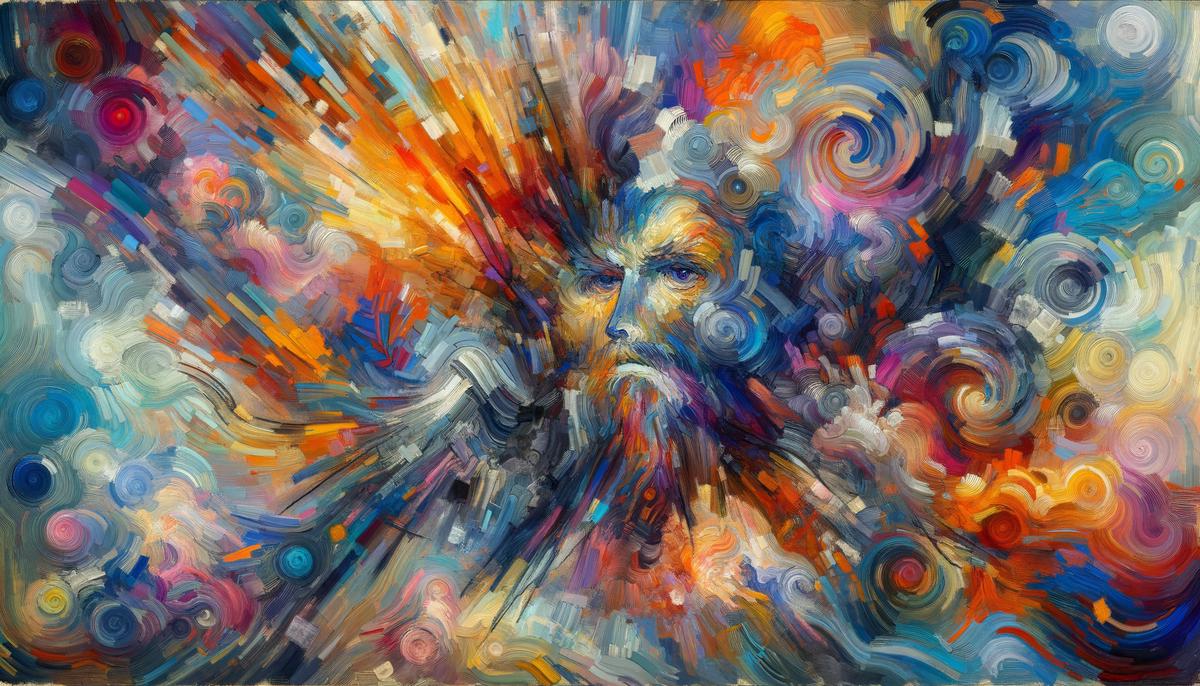
The Evolution of Van Gogh’s Artistic Style
Vincent Van Gogh’s early career was deeply influenced by his Dutch heritage, characterized by somber, earthy tones that reflected the austerity and simplicity of rural life in the Netherlands. His subjects during this period were often peasants and rural landscapes, portrayed with intense empathy and a heavy sense of realism. This phase set the foundation for Van Gogh’s lifelong quest to capture the essence of his subjects beyond mere appearance.
Upon moving to Paris, Van Gogh encountered the vibrant colors and dynamic brushwork of the Impressionists and Post-Impressionists. This exposure marked a significant turning point in his style. He began to incorporate lighter hues, exploring the effects of light on color through open-air painting. Paris was also where Van Gogh discovered Japanese prints, which captivated him with their bold outlines, unconventional perspectives, and flat areas of color. These elements gradually integrated into his own work, bridging his transition toward a more vivid and expressive style.
The period spent in Arles was perhaps the most transformative for Van Gogh. Here, fueled by the intense light and vibrant landscape of the South of France, his palette became saturated with luminous colors, his brushwork more dynamic and gestural. During this time, his fascination with capturing fleeting moments and the changing effects of light and color reached its zenith. The Arles period is renowned for the creation of some of his most celebrated paintings, including “The Starry Night”, where swirling skies and vibrant hues convey intense emotional resonance.
Van Gogh’s relationship with Paul Gauguin, whom he invited to Arles with hopes of creating an artists’ collective, also exerted a profound influence on his artistic development. The tension and eventual fallout between the two men resulted in a period of extraordinary creativity as well as personal turmoil for Van Gogh, culminating in the infamous episode in which he severed his ear.
Following this event, Van Gogh’s voluntary admission to the Saint-Paul asylum in Saint-Rémy-de-Provence led to a period of intense productivity, intertwined with episodes of debilitating mental health struggles. Despite these challenges, or perhaps because of them, he produced a remarkable body of work that includes some of his most profound and contemplative pieces. His paintings during this time exhibit a haunting beauty and emotional depth, as seen in “Irises” and “Wheatfield with Crows”, reflecting a balance between turbulence and a desperate search for peace.
Throughout these phases, Van Gogh relentlessly pursued his quest for a unique artistic language that could express his deep emotional and spiritual experiences. His evolution from the dark, somber tones of his early works to the vivid, passionate expressions of his latter years illustrates a relentless search for identity and understanding through the medium of paint. This journey was not just about mastering different styles or techniques, but about Van Gogh’s tireless exploration of the depths of his soul and his profound engagement with the world around him.
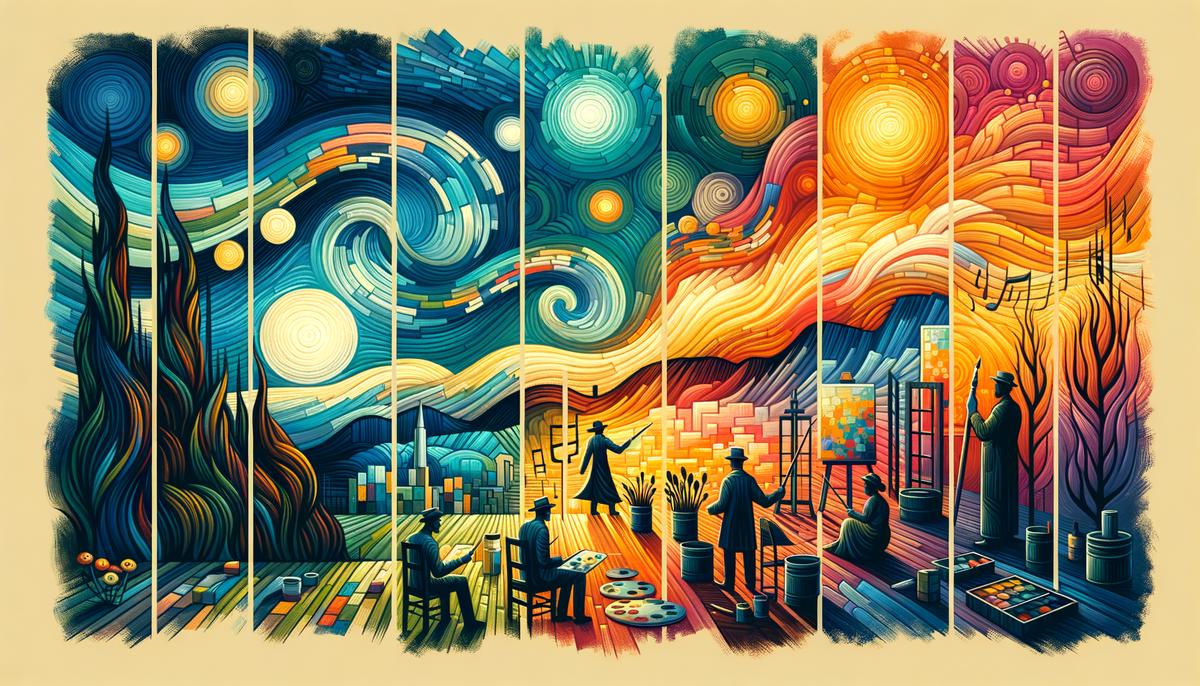
The Language of Color in Van Gogh’s Work
Van Gogh’s journey in using color as an emotional force and a vehicle for meaning delves deeper into his personal interpretation of the world around him. His selective use of vibrant hues wasn’t just about capturing the physical likeness of a subject but about imparting a sense of the emotional or spiritual resonance he found within it. This approach marked a radical departure from the more subdued, realistic palettes of his predecessors, making his work flame with life in ways that had rarely been seen before.
Take, for instance, the intense blues and yellows of “Starry Night.” Here, Van Gogh doesn’t just portray a night sky; he conveys the tumultuous energies he feels, the electric charge of the cosmos swirling overhead. The choice of such dynamic contrasts mimics the inner stirrings of his soul, making visible the invisible forces that moved him. The thick, swirling strokes of paint give the colors a pulsating energy, as if each hue is teeming with life.
In another piece, the wheat fields under a tormented sky, where crows hover ominously, Van Gogh employs color to set a brooding, almost apocalyptic tone. The juxtaposition of golden wheat with the darkening sky overhead creates a foreboding sense that something is amiss. Through this color scheme, Van Gogh communicates not just a scene of rural tranquility nearing distress but also an internal state of unrest, reflecting his own sense of doom.
Van Gogh’s engagement with color theory extended beyond personal intuition. He was deeply interested in contemporary scientific understandings of color as well as the symbolic qualities attributed to certain hues. His readings informed his strategic use of color to evoke specific psychological states and atmospheres. He once noted how color could express something “forceful,” attesting to his belief in color as a powerful communicative tool.
His methodology in employing color was notably intuitive, applying shades and tones in ways that felt right to him, which often meant deviating from naturalistic representations. This intuitive practice allowed him to experiment radically with color contrasts and harmonies, pushing the boundaries of traditional color theory.
Perhaps one of the most profound aspects of Van Gogh’s use of color lies in its ability to convey not just a visual experience but a felt one. The oranges and yellows of his series of sunflower paintings do more than captivate the eye; they evoke the warmth and energy of the sun itself, serving almost as a conduit for the viewer to feel its embrace. This symbolic use of color to embody deeper meanings or sensations demonstrates Van Gogh’s brilliance in rendering the transient impressions of life with startling intensity.
In several of his letters to his brother, Theo, Van Gogh articulates his thoughts on color as an essential element of his art, reflecting his ongoing quest to express humanity’s deeper truths through his palette. These letters reveal a man for whom color was far more than a tool of representation; it was a means to transcend the ordinary, to access a deeper, more universal truth.
Van Gogh’s approach to color, then, can be seen as a bridge between his inner and outer worlds, a way for him to navigate and communicate his intense emotional landscape. Through his revolutionary use of color, Van Gogh forged a language that could convey the ineffable, transforming personal suffering and joy into a visual form that continues to resonate with viewers more than a century later. His work stands as a potent reminder of art’s power to articulate the subtleties of human experience, inviting us into a world seen through his eyes—a world ablaze with color and emotion.
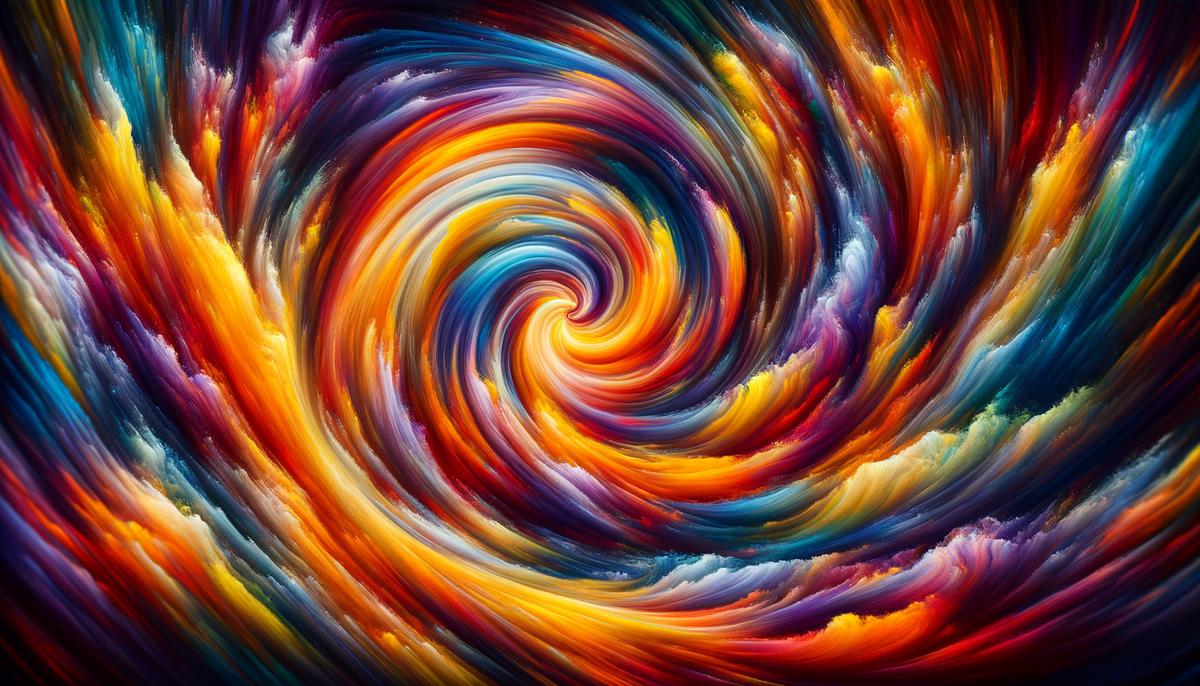
Van Gogh’s Influence on Modern Art
Van Gogh’s revolutionary brushwork, displaying swirling, dynamic strokes, directly influenced the later Expressionists, who sought to convey emotion through their artwork. These movements capitalized on the notion that brushstrokes could be an emotional language all their own.
In Fauvism, artists like Henri Matisse admired Van Gogh for his unabashed use of colors to evoke emotional responses rather than to describe the real world. Following Van Gogh’s ethos, Fauves pushed this concept to the limit, using wild, non-naturalistic colors.
Abstract Expressionists, decades later, found a kindred spirit in Van Gogh’s emotional spontaneity and use of paint to convey inner states. Artists such as Jackson Pollock and Willem de Kooning saw in Van Gogh’s evocative textural variations a precursor to their own expressions through thick impasto and action painting.
The symbolism in Van Gogh’s work – such as cypress trees and star-filled nights conveying deep contemplation and solace – showed future artists that everyday objects and views could carry profound symbolic weight. This idea is deeply integrated into many art movements that prioritize the conveyance of ideas over representational accuracy.
Artists across generations cite Van Gogh’s courage to depart from realism, leading the way for movements like Surrealism which sought to explore dreams and the unconscious far removed from visual fidelity.
His method of using dashes and dots of paint prefigures Pointillism’s formal strategies, yet with a visceral impact that surpasses mere technique. This demonstrated to artists that methods of creating could be deeply personalized and not merely technical exercises.
Even in contemporary times, beyond movements and labels, Van Gogh’s work endures in its relevance, teaching that the intensity of an artist’s vision can challenge societal norms, upend conventional aesthetics, and transcend its era.
Moreover, Van Gogh’s radical openness about his mental state in his art has foregrounded discussions about the artist’s psyche as inseparable from their creation, encouraging modern artists to embrace authenticity and vulnerability in their work.
Thus, Van Gogh’s legacy is not just in the stylistic elements he pioneered but in his overall approach to art—intensely personal, always probing, and utterly transformative—making him a torchbearer for artists navigating their place and purpose in the changing terrains of the modern era.
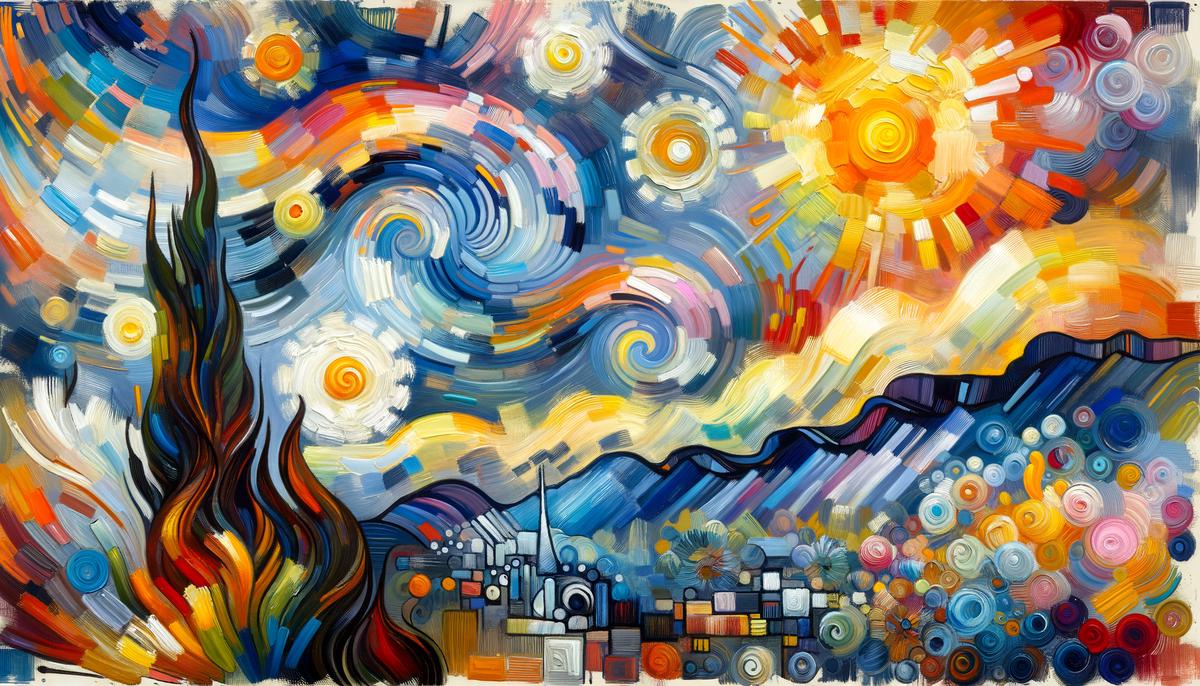
The Myth of the Tortured Artist
Van Gogh’s life embodies a narrative much more nuanced than a mere recounting of torment. Often, stories veer towards depicting him as embodying the ‘tortured artist’ trope, yet they neglect a far more intricate truth: his sedulous engagement with the world around him. It was not solely suffering that underpinned his creativity but an exhaustive intellectual curiosity and a substantive relationship with the environment that he resided in.
Vincent maintained an invigorated spirit despite facing seemingly insurmountable obstacles. He found solace in the biodiversity that surrounded him, drawing inspiration from the simplest of flowers to the most expansive of landscapes. This connection to nature is evident across his body of work, illustrating an artist deeply moved and motivated by the beauty of the world, even in his darkest moments.
Another aspect that sheds light on Van Gogh’s capacity to transcend the ‘tortured artist’ narrative is his expressed joy and wonderment. His avid letters to his brother, Theo, often reveal a man who, despite his battles, could experience profound happiness and awe, especially when discussing elements of his latest artwork or recounting the natural beauty he had witnessed.
What further counters the stereotype is Vincent’s intellectual vigor. He wasn’t just a man moving the paintbrush guided by turbulent emotions; he was methodically thinking about his craft, extensively engaged with art theories, and was a voracious reader whose tastes spanned from the Bible to literary classics and contemporary philosophical treatises. This intellectual engagement profoundly influenced his artistic decisions, challenging the notion that his art stemmed from madness rather than deliberate consideration and scholarly exploration.
Van Gogh’s desire to communicate and connect through his paintings highlights an often-overlooked emotional intelligence. He intended for his artwork not only to be a method of personal catharsis but also a means to resonate with others. It’s here we see an artist not isolated by his turmoil but reaching out, advocating for empathy, and offering solace through shared human experiences.
While articulating the unimaginable beauty and deep despair present in human existence, Van Gogh maintained a refined sensitivity, which underscored the breadth of the human condition. Not merely focusing on despair but embedding glittering moments of hope within even his most somber pieces.
In conclusion, Vincent Van Gogh’s existence challenges the superficial labeling of him as merely ‘tortured.’ His life and work should provoke a broader understanding that appreciates his multi-dimensional character – an individual who navigated through ceaseless intellectual quests, pursued beauty in its myriad forms, and utilized art not only as personal salvation but as a universal connective tissue. Engaging with Van Gogh requires the recognition of these layers, acknowledging an individual who personifies not the stereotype of despair but a palpable, dynamic expression of the entirety of human experience.
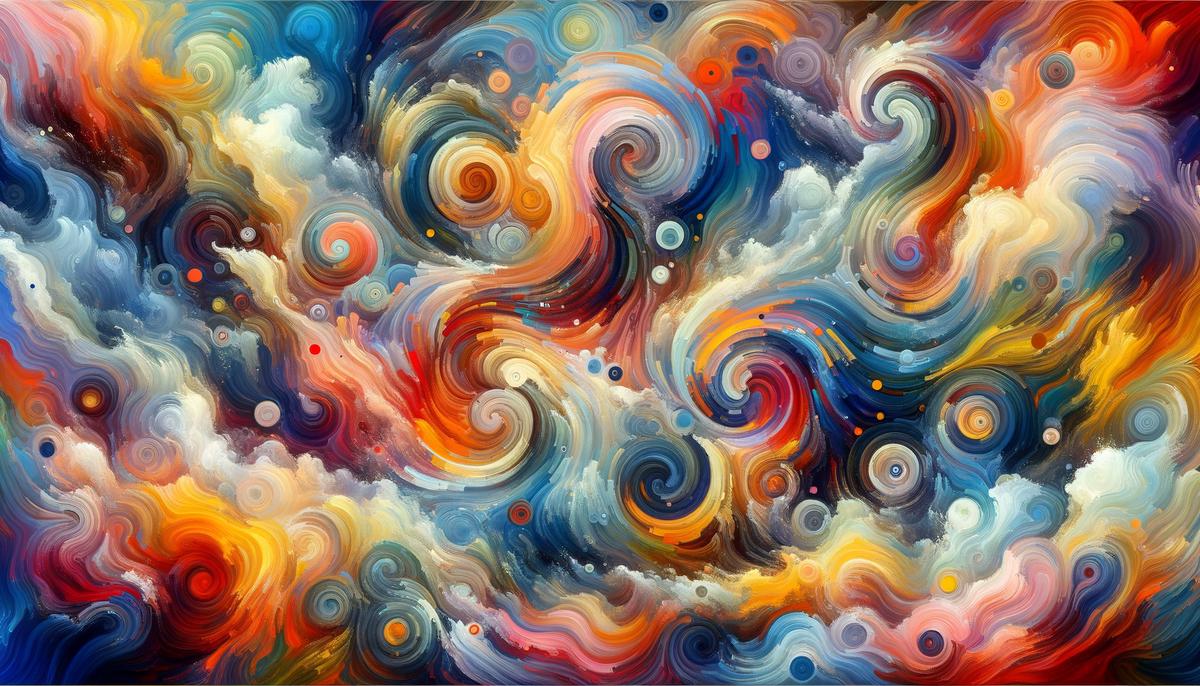
In essence, Vincent Van Gogh’s artistry transcends the mere act of painting; it serves as a bridge connecting his tumultuous inner world with the external reality, offering a glimpse into the soul of a man who found solace and expression through his brush. His legacy, characterized by an intense emotional engagement and a relentless pursuit of beauty amidst despair, challenges us to perceive art not just as a form of visual pleasure but as a profound commentary on the human experience. Van Gogh’s life reminds us that in the depths of personal struggle, there lies the potential for creating something truly transcendent.






















